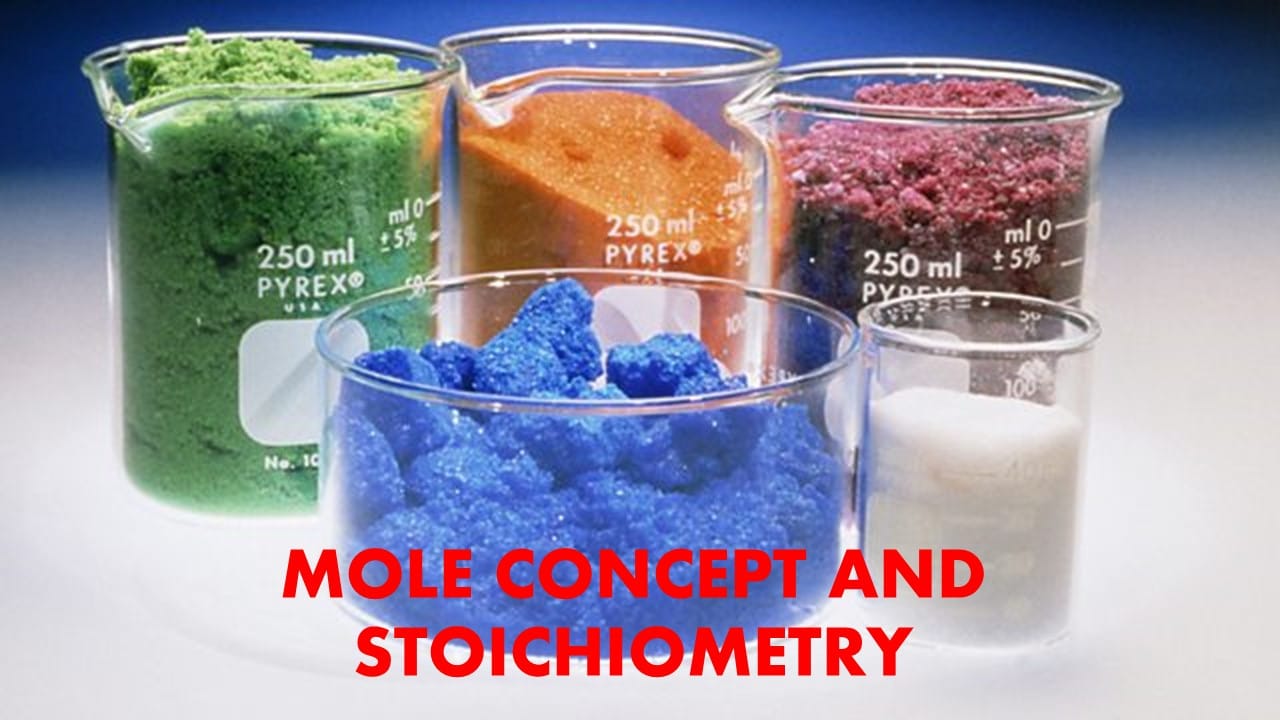STD X – MOLE CONCEPT AND STOICHIOMETRY – NEWTON
About Course
In this section will learn the following chapter:
1.the gas laws
2.Avogadro,s law;
3.RAM,RMM and mole conept
4.numericals
5.percentage composition
6.empirical formula and molecular formulae
7.numericals
Last Updated:September 10, 2025
0 (0 Ratings)
Share Course
Page Link
Share on social media

Description
Avogadros Law and Gay Lussacs Law
The gas laws were developed at the end of the 18th century when scientists began to realise that relationships between the pressure, volume, and temperature of a sample of gas could be obtained which would hold to a good approximation for all gases.
Gases behave in a similar way over a wide variety of conditions because they all have molecules which are widely spaced, and the equation of state for an ideal gas is derived from kinetic theory.
Avogadro’s law:
Amedo Avogadro proposed this law in the year 1811. Avogadro’s Law states that the volume occupied by an ideal gas is directly proportional to the number of molecules of the gas present in the container.
Gay Lussac’s law:
Gay-Lussac’s Law was found by Joseph Louis Gay-Lussac in 1809. It states that, for a given mass and constant volume of an ideal gas, the pressure exerted on the sides of its container is directly proportional to its absolute temperature.
Mole Concept
The mole is the unit of measurement in the International System of Units (SI) for an amount of substance. The number of molecules per mole is known as Avogadro’s constant and is defined such that the mass of one mole of a substance, expressed in grammes, is equal to the mean relative molecular mass of the substance.
Percentage composition,Empirical and Molecular formulae
The percentage by mass of each element present in a compound is given by percentage composition.
The simplest ratio of the whole numbers of atoms of different elements present in one molecule of the compound is given by the simplest formula known as the Empirical formula. With the help of empirical formula, we can calculate the empirical mass of the compound.
Free
Free
Free access this course
-
LevelIntermediate
-
Total Enrolled3
-
Last UpdatedSeptember 10, 2025
Hi, Welcome back!
Material Includes
- 🔥 Live Interactive classes with in-class doubt solving
- ⭐ Weekly Test and Quiz with instant tracking for progress
- ⚙️ Revision of the course after testing
- 👋 Fortnightly Parents and Tutor interactions
- 🌷 Expert monitoring of student's learning progress
- 👨👩👧👧 Daily communication over call, whatsapp and mail
- 💻3 hours on-demand video
- ✍4 downloadable resources
- ⌛Access for entire Academic Year
- 📱Access on mobile and Desktop
- 📋Assignments and review of the same
- 💡Tests and Correction by Board paper checkers
- 🏅Certificate of completion and Live tracking with Grade book
Course Duration:
0
Course level:Intermediate
Enrolled:3
About Course
In this section will learn the following chapter:
1.the gas laws
2.Avogadro,s law;
3.RAM,RMM and mole conept
4.numericals
5.percentage composition
6.empirical formula and molecular formulae
7.numericals
Course Curriculum
MOLE CONCEPT AND STOICHIOMETRY – LAW OF COMBINING VOLUMES AND AVOGADRO’S LAW
-
[RHEA] [PHYSICAL] INTRODUCTION TO GAS LAWS AND PRINCIPLE OF COMBINING VOLUMES
18:07 -
[RHEA] [PHYSICAL] NUMERICALS BASED ON COMBINING VOLUMES – I
23:16 -
[VANASHREE] [PHYSICAL] NUMERICALS BASED ON LAW OF COMBINING VOLUMES – II
16:57 -
[VANASHREE] [PHYSICAL] PROBLEMS BASED ON COMBINING VOLUMES – III
17:58 -
[VANASHREE] [PHYSICAL] NUMERICALS BASED ON LAW OF COMBINING VOLUME – IV
07:26 -
[RHEA] [PHYSICAL] NUMERICALS BASED ON AVAGADRO’S LAW
14:46 -
Lesson 8: [VANASHREE] [PHYSICAL] PROBLEMS BASED ON RAM RMM AND AVOGADRO’S NUMBER – I
16:40 -
[VANASHREE] [PHYSICAL] PROBLEMS BASED ON RAM RMM AND AVOGADRO’S NUMBER – II
11:50 -
[RHEA] [PHYSICAL] CONCEPT OF RMM, GAM, GMM AND AVOGADROS NUMBER
46:44 -
[ONLINE] [RHEA] – MOLE, EMPIRICAL FORMULA AND NUMERICALS
01:29:03
EMPIRICAL FORMULA AND MOLECULAR FORMULAE
-
EMPIRICAL FORMULA AND MOLECULAR FORMULAE – SUPPORT MATERIAL – MOLECULAR AND EMPIRICAL FORMULA
04:33 -
STOICHIOMETRY – PHYSICAL CLASS – EMPIRICAL AND MOLECULAR FORMULA PART I
14:36 -
STOICHIOMETRY – PHYSICAL CLASS – EMPIRICAL AND MOLECULAR FORMULA PART II
06:31 -
[RHEA] [ONLINE] MOLE, EMPIRICAL FORMULA AND NUMERICALS
01:33:00 -
QUIZ – MOLE CONCEPT – PERCENTAGE COMPOSITION OF COMPOUNDS
NUMERICALS
-
NUMERICALS – SUPPORT MATERIAL – MOLECULAR AND EMPHIRICAL FORMULA
04:33
STOICHIOMETRT – REVISION CLASS- 02 SEPTEMBER
-
STOICHIOMETRY – REVISION CLASS – PART – II
20:55 -
STOICHIOMETRY – REVISION CLASS – PART – I
17:02 -
STOICHIOMETRY – ONLINE CLASS – GAY LUSSAC’S LAW AND RMM
01:09:45
MOLE CONCEPT AND STOICHIOMETRY – 2025-26
-
X – MOLE CONCEPT – GAY LUSSAC’S LAW OF COMBINING VOLUMES & AVOGADRO’S NUMBER
49:54
ASSIGNMENTS AND PAPER DISCUSSION
Student Ratings & Reviews

No Review Yet

